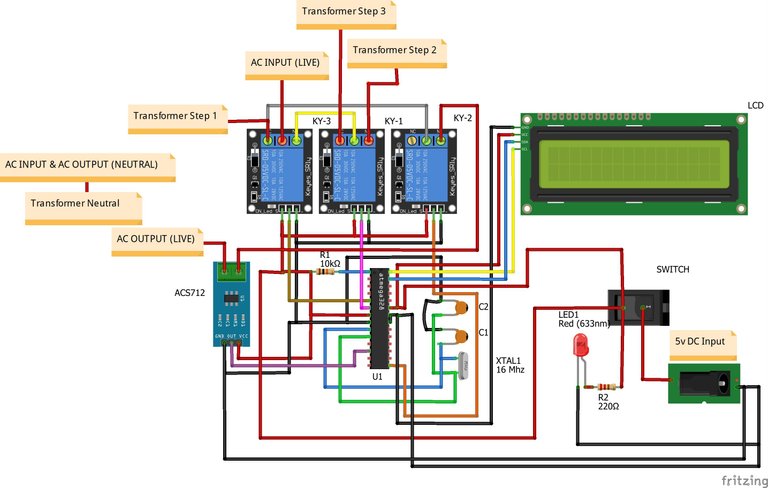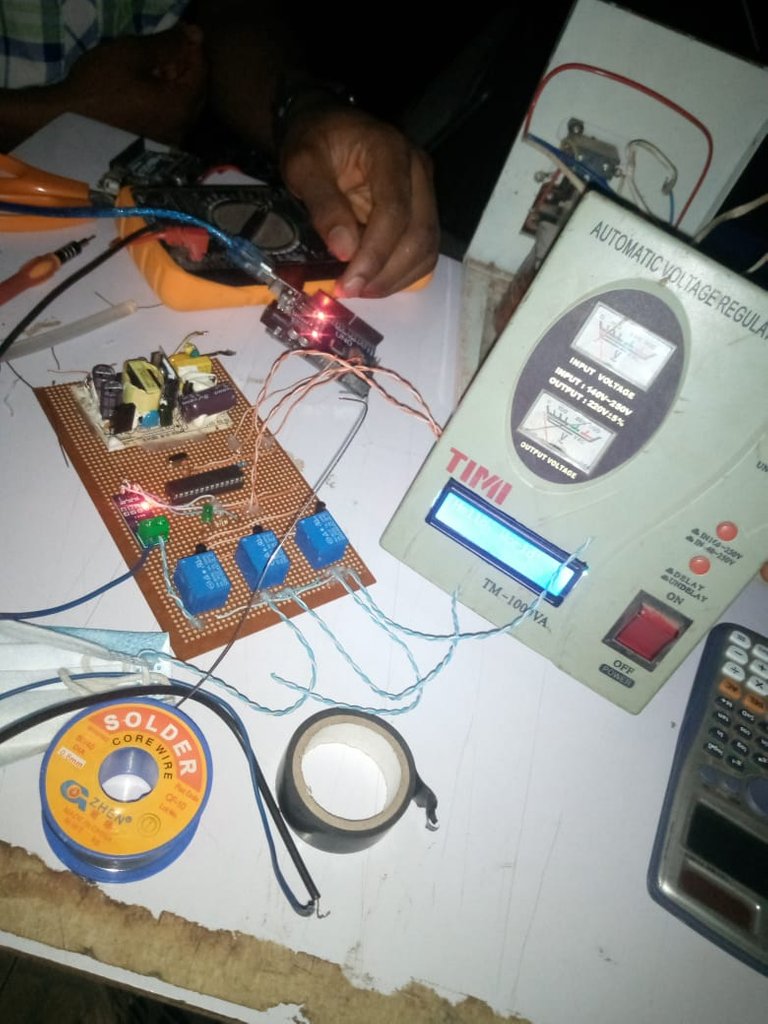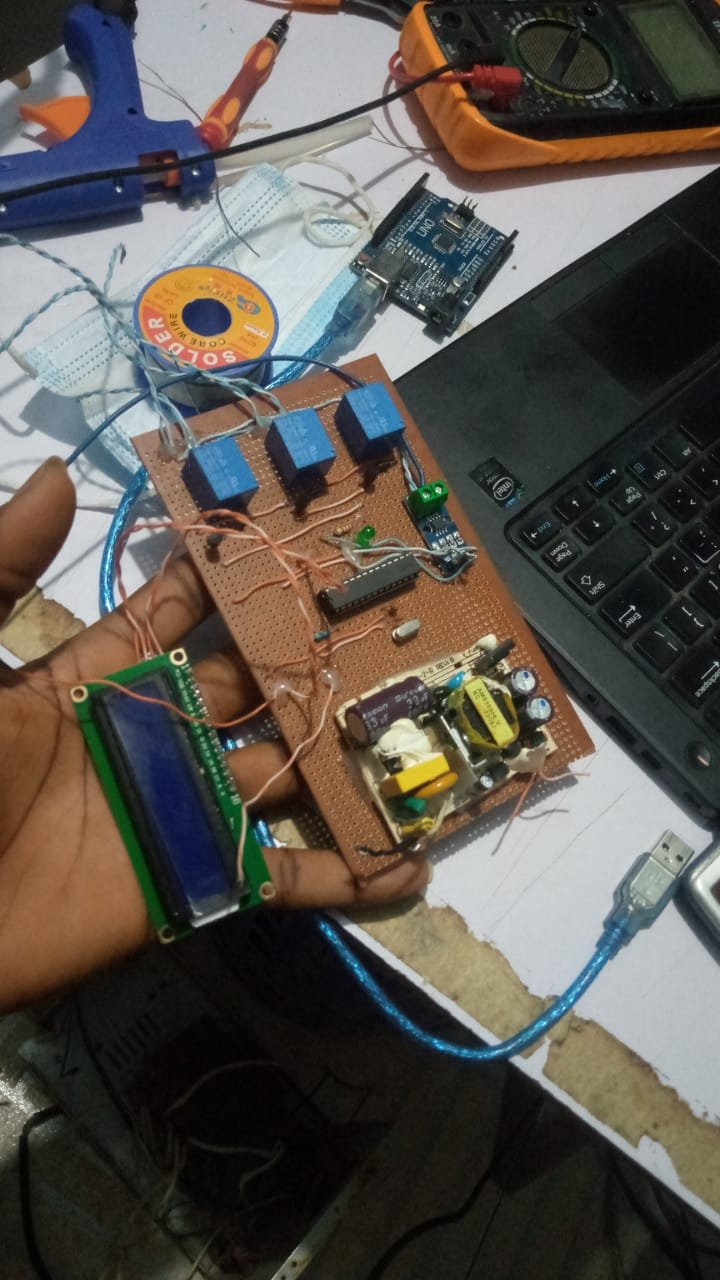Checkout An Automatic Voltage Stabilizer That Uses A Microcontroller LCD Display Screen and Switching Relays I Developed

Hi, I'm delighted to share my recent development, which is an automatic voltage stabilizer that uses a microcontroller, LCD (Liquid Crystal Display) screen with switching relays as its major components.
A voltage stabilizer is a device that ensures a constant and stable amount of voltage at its output irrespective of the rise and fall in the value of the input voltage. That is when the input voltage is higher than the rated value then the voltage stabilizer steps down the voltage and ensures that the output is a stabilizer and remains the rated output voltage, protecting appliances connected to it from damage due to the increase in the input source voltage. And also, when the input voltage is low, the voltage stabilizer steps up the voltage and ensures that the output voltage it maintains is rated output voltage value helping in delivering and stable and rated amount of output voltage which is sufficient to power the appliances connected to it.
A voltage stabilizer would always have a transformer in it, which has several voltage taps with different voltage levels, which determines and help stabilize the output voltage by switching among the voltage taps to ensure a stabilized output voltage value.
In the development of this project or device, the following hardware components were used:
- Atemega328P PIC (Programmable Integrated Circuit)
- Current Sensor
- Voltage Sensor
- LCD (Liquid Crystal Display Screen)
- 22pF Ceramics Capacitor x2
- 16MHz Crystal Oscillator
- Three (3) Relay Modules
- Indicating LED (Light Emitting Diode)
- Resistor
- I2C LCD (Liquid Crystal Display) Driver Module
- Connecting Wires
- 5V DC Power Adapter
- Transformer
- Control Switch
The software components used includes:
- Arduino IDE (Integrated Development Environment)
- Embedded C/C++ Programming Language
The ATMEGA328P PIC (Programmable Integrated Circuit) serves as the brain of the device which is where the codes written for the project or device is been uploaded to. All other components connect to the PIC, send and receive instructions and information from and to the PIC which serves as the microcontroller in the device. The voltage sensor and current sensor sense the input voltage and current from the mains source and send the instruction to the PIC on receiving the instruction the microcontroller then uses it to determine with voltage taps on the transformer the output voltage should be selected from using the relays. The values of the input voltage and current with the values of the output voltage and current are then been displayed on the LCD display screen for easy monitoring and also the LCD is used for displaying other relevant information to the user for easy interactions with the device. The controller section of the device is been powered from a 5v DC power adapter which picks its source from the input voltage. While the LED bulbs are used to proper indications when the device is switched on using the control switch.


I have created a repository on GitHub and pushed the codes and other resources used in the development of this project and it can all be accessed via this link.
Thanks for reading 🤝. If you find this post interesting you can help or support it with reblogging, upvoting, and commenting, it would be highly appreciated.
Posted with STEMGeeks
Congratulations @techlhab! You have completed the following achievement on the Hive blockchain and have been rewarded with new badge(s):
Your next target is to reach 2250 upvotes.
You can view your badges on your board and compare yourself to others in the Ranking
If you no longer want to receive notifications, reply to this comment with the word
STOPCheck out the last post from @hivebuzz:
Support the HiveBuzz project. Vote for our proposal!